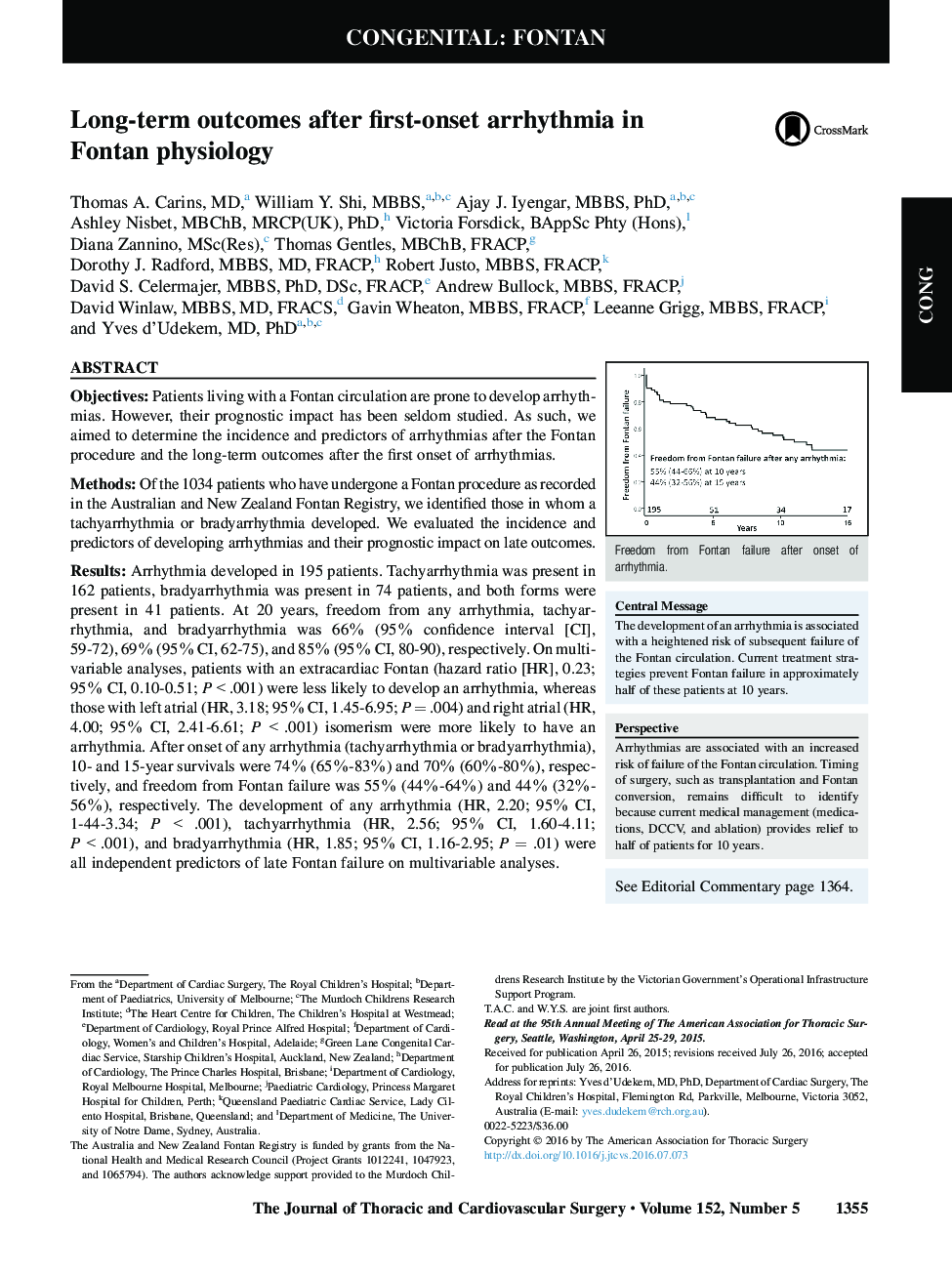| کد مقاله | کد نشریه | سال انتشار | مقاله انگلیسی | نسخه تمام متن |
|---|---|---|---|---|
| 5616982 | 1578580 | 2016 | 10 صفحه PDF | دانلود رایگان |
ObjectivesPatients living with a Fontan circulation are prone to develop arrhythmias. However, their prognostic impact has been seldom studied. As such, we aimed to determine the incidence and predictors of arrhythmias after the Fontan procedure and the long-term outcomes after the first onset of arrhythmias.MethodsOf the 1034 patients who have undergone a Fontan procedure as recorded in the Australian and New Zealand Fontan Registry, we identified those in whom a tachyarrhythmia or bradyarrhythmia developed. We evaluated the incidence and predictors of developing arrhythmias and their prognostic impact on late outcomes.ResultsArrhythmia developed in 195 patients. Tachyarrhythmia was present in 162 patients, bradyarrhythmia was present in 74 patients, and both forms were present in 41 patients. At 20Â years, freedom from any arrhythmia, tachyarrhythmia, and bradyarrhythmia was 66% (95% confidence interval [CI], 59-72), 69% (95% CI, 62-75), and 85% (95% CI, 80-90), respectively. On multivariable analyses, patients with an extracardiac Fontan (hazard ratio [HR], 0.23; 95% CI, 0.10-0.51; PÂ <Â .001) were less likely to develop an arrhythmia, whereas those with left atrial (HR, 3.18; 95% CI, 1.45-6.95; PÂ =Â .004) and right atrial (HR, 4.00; 95% CI, 2.41-6.61; PÂ <Â .001) isomerism were more likely to have an arrhythmia. After onset of any arrhythmia (tachyarrhythmia or bradyarrhythmia), 10- and 15-year survivals were 74% (65%-83%) and 70% (60%-80%), respectively, and freedom from Fontan failure was 55% (44%-64%) and 44% (32%-56%), respectively. The development of any arrhythmia (HR, 2.20; 95% CI, 1-44-3.34; PÂ <Â .001), tachyarrhythmia (HR, 2.56; 95% CI, 1.60-4.11; PÂ <Â .001), and bradyarrhythmia (HR, 1.85; 95% CI, 1.16-2.95; PÂ =Â .01) were all independent predictors of late Fontan failure on multivariable analyses.ConclusionsThe development of an arrhythmia is associated with a heightened risk of subsequent failure of the Fontan circulation.
Journal: The Journal of Thoracic and Cardiovascular Surgery - Volume 152, Issue 5, November 2016, Pages 1355-1363.e1
